#north frisian
Text

Eleven and twelve are ancient compound words. The first elements are the words for one and two, the second element is related to to leave. The Proto-Germanic ancestor of eleven literally meant 'one left (to count after ten)', i.e. 'one past ten'. Here's more.
#linguistics#historical linguistics#language#etymology#lingblr#english#old english#old saxon#low saxon#old frisian#west frisian#north frisian#old dutch#dutch#west flemish#old high german#middle high german#middle dutch#middle english#scots#alemannic#luxembourgish#old norse#icelandic#norwegian#danish#swedish#proto-germanic
85 notes
·
View notes
Text
Deutschribing Germany
Languages
Most languages native to Germany belong to the Germanic family, but some of them are Slavic languages. German is the official language, with over 95% of the country speaking Standard German or one of its dialects as their first language.
There are six recognized minority languages: Danish, Lower Sorbian, North Frisian, Romani, Saterland Frisian, and Upper Sorbian. The main immigrant languages spoken are Arabic, Dutch, Greek, Italian, Kurdish, Polish, Russian, Serbo-Croatian, Tamil, Turkish, and Ukrainian.
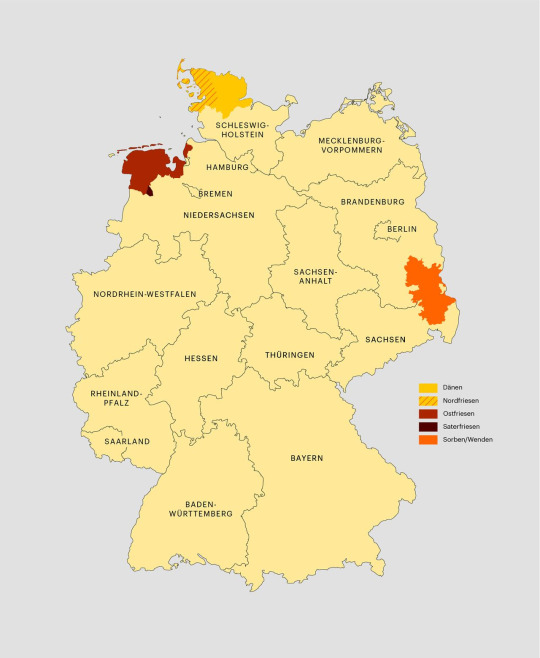
German (Deutsch)
German belongs to the West Germanic group of languages and is the native language of 95 million people. It is the official language in Austria, Belgium, Germany, Liechtenstein, Luxembourg, and Switzerland, as well as South Tyrol in Italy, and is a recognized minority language in ten countries from four different continents.
German Standard German is the standardized variety of German spoken in Germany. Its pronunciation is similar to the German spoken in Hanover. Its alphabet has 30 letters: a b c d e f g h i j k l m n o p q r s t u v w x y z ä ö ü ß. Most German vocabulary is of Germanic origin, but around one fifth was taken from French or Latin. German dialects and varieties are explained in detail in this post.

Romani (rromani ćhib)

Sinte Romani (sintitikes) is the variety of Romani spoken in Germany and neighboring countries. It belongs to the Northwestern Romani dialect group, which in turn is part of the Indo-Iranian branch of the Indo-European family. It is spoken by around 195,000 people and is not mutually intelligible with other Romani varieties.
There is no standard pronunciation or grammar. The alphabet has 31 letters: a b c č čh d dž e f g h i j k kh l m n o p ph r s š t th u v x z ž.
Danish (dansk)
Danish is a North Germanic language with 6 million native speakers. It is the official language of Denmark and the Faroe Islands and a recognized minority language in Schleswig-Holstein and Greenland.
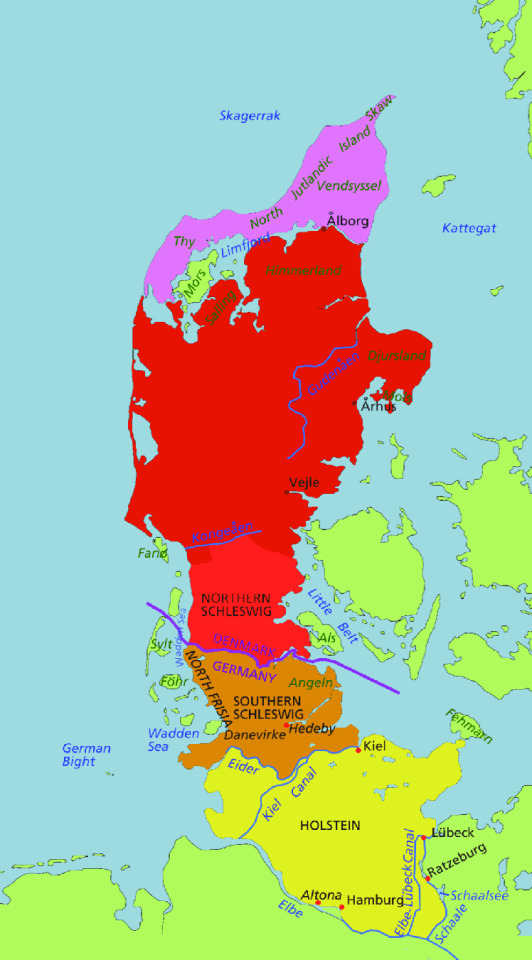
The Danish alphabet has 29 letters, including the 26 found in the English one and æ, ø, and å.
Upper Sorbian (hornjoserbšćina)
Upper Sorbian (Obersorbische Dialekte in the map) belongs to the West Slavic branch and is recognized as a minority language in Saxony, where its 13,000 native speakers live.
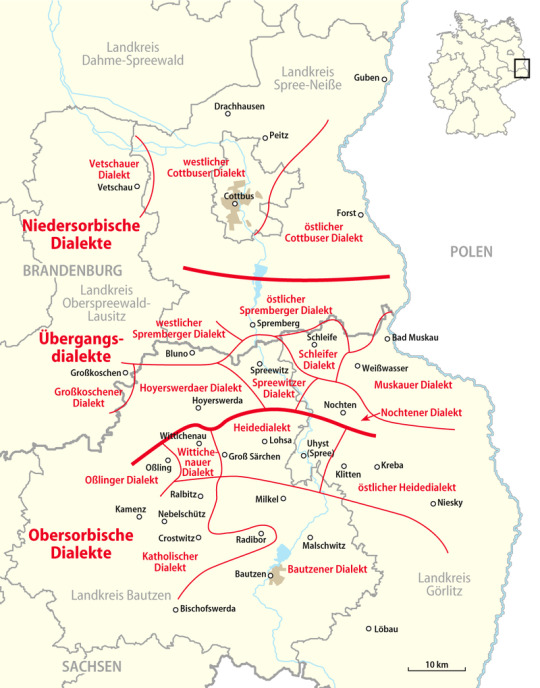
Its alphabet has 34 letters: a b c č ć d dź e ě f g h ch i j k ł l m n ń o ó p r ř s š t u w y z ž.
North Frisian (Nordfriisk)
North Frisian is part of the West Germanic branch and is spoken natively by 10,000 people in Schleswig-Holstein. It comprises 10 dialects, which are divided into two groups: insular and mainland.

Its phonology and orthography vary depending on the dialect, but there are 32 basic letters: a ä å b ch d dj đ/ð e f g h i j k l lj m n ng nj o ö p r s sch t tj u ü w.
Lower Sorbian (dolnoserbšćina)
Lower Sorbian (Niedersorbische Dialekte in the map of Sorbian dialects) is a West Slavic language spoken natively by 6,900 people in Brandenburg.
It uses the same letters as Upper Sorbian but adds ś and ź and uses ŕ instead of ř, bringing the total number of letters to 36.
Saterland Frisian (Seeltersk)
Saterland Frisian belongs to the West Germanic branch and is recognized as a minority language in Lower Saxony. It is spoken by 2,200 people and has three fully mutually intelligible dialects.
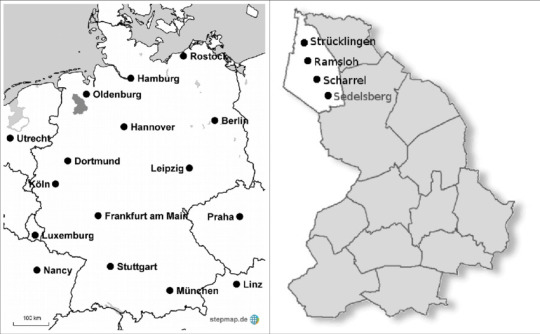
Its orthography has not been standardized yet, but there are 31 common letters: a ä b ch d e f g h i ie j k/kk ks kw l m n ng o oa ö p r s sch t u ü v w.
Here is Article 1 of the Universal Declaration of Human Rights in the native languages of Germany:
German: Alle Menschen sind frei und gleich an Würde und Rechten geboren. Sie sind mit Vernunft und Gewissen begabt und sollen einander im Geist der Brüderlichkeit begegnen.
Romani: Sa e manušikane strukture bijandžona tromane thaj jekhutne ko digniteti thaj capipa. Von si baxtarde em barvale gndaja thaj godžaja thaj trubun jekh avereja te kherjakeren ko vodži pralipaja.
Danish: Alle mennesker er født frie og lige i værdighed og rettigheder. De er udstyret med fornuft og samvittighed, og de bør handle mod hverandre i en broderskabets ånd.
Upper Sorbian: Wšitcy čłowjekojo su wot naroda swobodni a su jenacy po dostojnosći a prawach. Woni su z rozumom a swědomjom wobdarjeni a maja mjezsobu w duchu bratrowstwa wobchadźeć.
North Frisian: Ali Mensken sen frii, likwērtig en me disalev Rochten bēren. Ja haa Forstant en Giweeten mefingen en skul arküđer üs Bröđern öntöögentreer. (Sylt/Sölring dialect)
Lower Sorbian: Wšykne luźe su lichotne roźone a jadnake po dostojnosći a pšawach. Woni maju rozym a wědobnosć a maju ze sobu w duchu bratšojstwa wobchadaś.
Saterland Frisian: Aal do Moanskene sunt fräi un gliek in Wöide un Gjuchte gebooren. Joo hääbe Fernunft un Gewieten meekriegen un schällen sik eenuur as Bruure ferhoolde. (Ramsloh dialect)
Translation: All human beings are born free and equal in dignity and rights. They are endowed with reason and conscience and should act towards one another in a spirit of brotherhood.
5 notes
·
View notes
Text
youtube
Christop Hansen, Martje Johannsen - Iir (North Frisian)
#slow with easy listening jazz in the bg#christop hansen#martje johannsen#iir#north frisian#frr#germanic#indoeuropean#europe#germany#2021#2020s#folk#Youtube
1 note
·
View note
Text
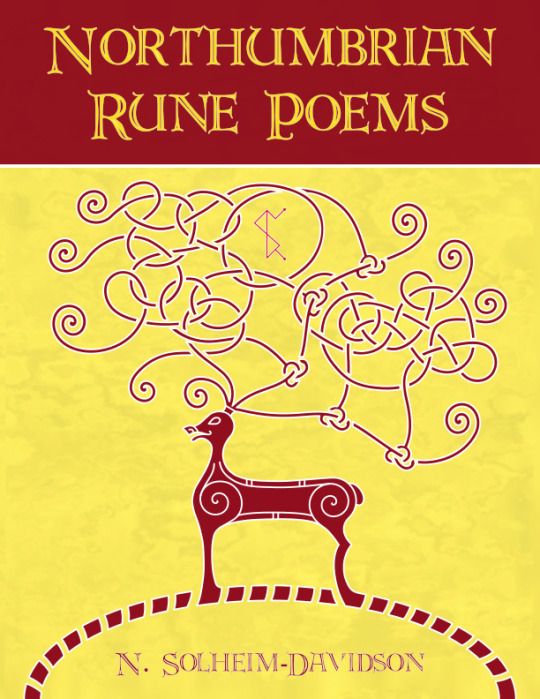
Northumbrian Rune Poems is now officially available for purchase. Digital and physical copies available here.
Inspired by the Old English Rune Poem, Northumbrian Rune Poems centres its focus on the Early Medieval English Futhorc runerows with additional attention paid to the four runes that were in use in Northumrbia. Mixing free verse poetry with kennings found within Old Norse and Old English poetry, Northumbrian Rune Poems is a magical read that breathes new life into an otherwise neglected runerow. Alongside each poem is an Old English adaptation written in a Northumbrian dialect using Old English alliterative style to capture the spirit of the poems in a new light.
#north sea poet#heathenry#poetry#my poetry#nico solheim-davidson#heathen#runes#futhorc#Northumbria#Heathen Poet#Heathen Poetry#north sea rune poems#northumbrian futhorc#anglo-saxon futhorc#anglo-frisian futhorc#rune poems#old english#anglo saxon
88 notes
·
View notes
Text




Sylt (2) (3) (4) by Angela Diana
16 notes
·
View notes
Text

Seven hours of hiking - four hours I did it barefoot. I totally underestimated this "tiny" island. But it was worth the effort. I've heard seals (couldn't see them because of the flood) and heard how sand sounds when the wind blows. Anakin Skywalker would hate this place.
0 notes
Text
Cooking like a Sailor- Frisian teatime
Today it's going to be a bit Friesian again and this time the delicious treats come mainly from the North Sea islands and Halligen, where they usually originated before they floated ashore and were eaten or drunk there.
Now that we are approaching autumn with great strides, there are such delicacies. This was the time when many of the seafaring men returned home, which meant a rich harvest of specialities from foreign countries and often also the weddings were hold which were arranged the year before.
But let's start with the drink: tea punch, just the thing for the wet and cold season when it's stormy and raining outside.

Ingredients: Black tea, köm and kluntjes (brown sugar candy).
But even more important than the right ingredients are the way it is prepared and consumed. If you are in a hurry, you have no place at the tea punch table!
The tea punch is served as follows: The teapot is placed on the teapot warmer and the pre-heated bottle of Köm is placed on the table. Don't be surprised: the tea punch cups are tiny. This has nothing to do with stinginess, but with cosiness. And this is how it works: Pour tea into the cup, add a dash of köm and sugar to taste. Listen to the Kluntjes crack, stir and drink hot. Have a chat and then top up again.
This drink has existed on the islands since 1735, when a ship with tea chests stranded off Amrum at Theeknobs, although at the beginning there was no knowledge of how to prepare the tea leaves. As a result, the tea was drunk quite thinly, which was also due to the fact that tea was something special that was not always available, just like schnapps. Köm is a spirit similar to aquavit with caraway seeds. The yellow (geele) Köm is particularly common in the North Frisian region. This is a spirit, usually made with grain, which is mixed with caraway and sometimes with a hint of aniseed.
The tea punch was of course also known on ships, but here the köm was swapped for rum and the punch was used to warm up rather than for chatting. Sailors preferred to do this on land.
What do you serve with tea? Hallig Knorken or Friesenwaffeln are best. This wafer-thin delicacy has been around since the 16th century thanks to the Dutch who settled in northern Germany. They were light waffles that were made with rum and then served with plum jam and cream. Again, these delicacies were either brought by the men or had to be bartered or bought on the land, as the islands and Halligen did not have huge areas of land available for agriculture and so there was a lot of trade with the delicacies from the sea.
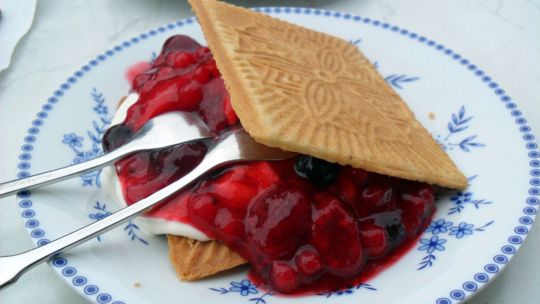
Ingredients for 4 people (this is the modern recipe)
4 eggs 200g sugar
250g butter
300g flour
3-4 tsp. cornflour
50ml rum
1 packet of vanilla sugar
1 pinch of salt
Bake the waffles in an iron and then serve hot with plum jam and cream.
Now we come to the highlight of every festive table - the Friesentorte. This magnificent cake is truly a precious piece. Because it requires valuable ingredients that were not always available back then and were therefore more likely to be found on festive tables. It is not known when it has been around, but probably since the 19th century, thanks to the sailors who brought many recipes with them from other countries. Like puff pastry, for example.

Today's variations also work with shortcrust pastry, but are not the original recipe
Recipe
Bake two puff pastry bases (you can use ready-made pastry)
Brush one of the bases (the top) with egg yolk and sprinkle with caster sugar
Leave the second (base) plain
After baking, spread the base generously with plum jam
Spread not too little whipped cream on the plum jam base
Cut the top into 12 even pieces and then arrange the pieces on top.
The wealthier the family the more the cake would consist of several layers. Which made eating even more complicated, because how do you eat this monster without smearing cream all over your face? Well, you take the lid off, eat the inside and nibble the lid separately.
So there you have it and I wish you a delicious tea time of a different kind. Enjoy your tea and your tasty treats like real Frisians.
#naval history#frisian tea time#tea waffels and cake#16th - today#age of sail#age of steam#modern#cooking like a sailor
572 notes
·
View notes
Text
Ok, so there are some people who don't understand why it's insensitive to say that kids learning sign language is great because "they have so much fun having a little secret language", and I take that in good faith and assume that you simply don't know much about history and culture regarding sign languages.
So here's a comparison with oral languages; with minority and endangered languages, to be precise.
I'll start with my own culture, with North Frisian.
North Frisian was prohibited multiple times in history, or at least seen as a "lesser" language, and native speakers were seen as "lesser" as well. There was a lot of discrimination, and as a result my grandma completely forgot her North Frisian variation and her kids didn't learn it. This language is actively revived now, but my grandparents are too old to successfully learn another language, and I have a disability that makes it impossible to learn new grammar. We can't read old letters in that language, a huge chunk of history is permanently lost for us.
If you learn North Frisian while ignoring the culture and discriminatory history of Frisian people, you reinforce the sentiment that it's a "lesser" language; not worth acknowledging that we suffered and sometimes still do. East Frisian is completely extinct, by the way. Most East Frisians speak Low German variations now, but even THAT is a minority language. Even that.
Another example. Australia. Indigenous languages of Australia. You know that native speakers still face discrimination to this day, don't you? You don't? Oh, well they do, they're also seen as "lesser" people and so are their languages. If you learn one of their languages just for fun while ignoring their history and culture, you reinforce the sentiment that these languages are unimportant, not real languages, "lesser" languages.
African languages? You know that these languages aren't dialects but real languages, don't you? You know that you can't ignore culture and history when learning these languages, right? Because, yeah, otherwise you reinforce the sentiment that they're "lesser" languages and that the people who speak it are "lesser".
Alright, most of you people are from the U.S., so... Your indigenous people. Their languages. It's the same here, prohibition, seen as "lesser" people and "lesser" languages. I think you get it by now, right? There was discrimination, there still is discrimination, and the minority language can't be separated from that discrimination because the language itself was discriminated against.
Now... Most sign languages are real languages that developed naturally, did you know that? Most sign languages aren't constructed languages. These languages developed over time just as oral languages did. That's why they're so different from country to county. And most sign languages, just as most oral minority languages, were prohibited at some point because they were, and still are, seen as "lesser". In my country, native sign language speakers were forced to learn to speak with their mouth. There was and is a lot of oralism going on. People speaking sign language were discriminated against and seen as "lesser". Sign language wasn't considered a real language, even though it developed naturally.
And this is still happening, this is still going on today.
Do you see my point? Learning a minority language for fun while ignoring the discrimination native speakers faced and still face, while ignoring the culture that can't be separated from this discrimination, while ignoring the history of that language... reinforces the sentiment that it's a lesser language and that native speakers are lesser.
And this goes for sign languages too. Especially for sign languages, to be honest, because people usually can understand this when it comes to oral languages, but somehow not for sign languages.
That's why it's insensitive to say that learning sign language is fun because it's a "secret language". In doing so, you ignore the culture and history of a minority language.
#people of the cultures I mentioned please feel free to correct me if I made a mistake or used outdated words#long post
276 notes
·
View notes
Text
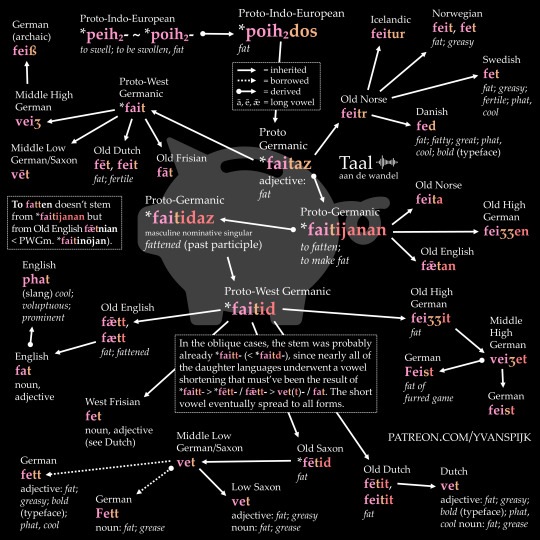
The history of fat
The word fat comes from Old English fǣtt. This adjective was originally a past participle meaning 'fattened; made fat'. The corresponding verb was fǣtan (to fatten; to make fat). If it had survived, it would probably have become to *feat (not related to the noun feat, which comes from Old French fait 'fact; deed').
Dutch vet, German feist and fett (a borrowing from Saxon) and West Frisian fet have the same history as fossilised past participles. The North Germanic words meaning fat, such as Swedish fet and Icelandic feitur, are closely related, but they don't come from a past participle. Instead, they stem from an adjective that in West Germanic only marginally survived as German feiß (and dialectal forms). The English cognate would've been *foat.
#historical linguistics#linguistics#language#etymology#english#dutch#german#old norse#danish#norwegian#swedish#icelandic#old high german#middle high german#old english#frisian#middle low german#old saxon#low saxon#old dutch#old frisian#proto-indo-european#proto-germanic#proto-west germanic#lingblr
53 notes
·
View notes
Text
Days of the week series: Saturday
Old High German - Sunnunabond
Old Frisian - Snjoen (sun evening)
Modern German - Sonnabond (sun evening)/ Samstag
Roman era equivalent - Dies Saturni
Saturday is the one day of the week which has no (godly) Germanic equivalent. It is uncertain as to how or why, but general consensus is that no Germanic equal was found for Roman god Saturnus.
When looked upon closely, Saturnus has similar attestations to both Odin and Thor. Historically however, the choice has been made to associate Odin with Mercurius and Thor with Jupiter.
The similarity of “sun evening” in Frisian and German is accidental, as the German version originated from Hebrew instead. The OHG word sambaztac, which originated samstag is a Greek loan word in origin (savvato) which is also Hebrew (Shabbat/Sabbat).
The Frisian version of “sun evening” is completely unrelated to its German counterpart. It did not manage to manifest in other parts of the Germanic areas, despite their influence on the North Sea area.
To conclude: although named after an important Roman deity, the day in itself wasn’t regarded of importance by the Early Medieval north and west of Europe. It was simply regarded as “the day before Sunday”.
Mon, Tue, Wed, Thur, Fri, Sun
#frankish#merovingian#viking archaeology#archaeology#carolingian#charlemagne#field archaeology#viking mythology#merovingian archaeology#germanic mythology#norse mythology#anglo saxon#viking#field archaeologist#frisian#odin#vikings#germanic#germanic folklore#germanic archaeology#wodan#anglo saxon archaeology#history#jewelry#norse#saturnus#saturday#Saturn
18 notes
·
View notes
Text

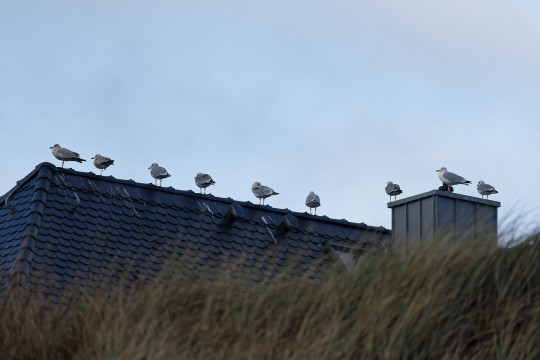
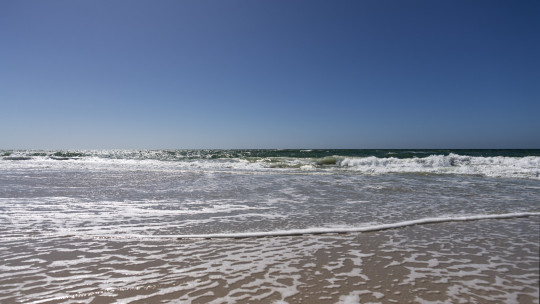
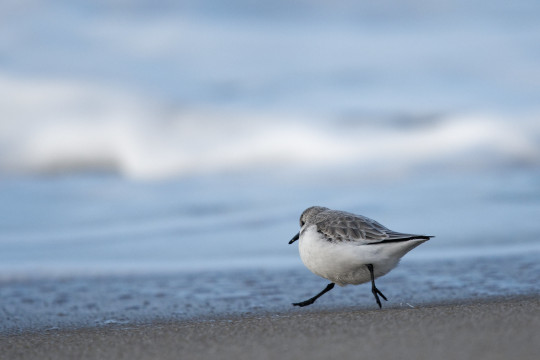
Sylt (2) (3) (4) by Holger Schramm
Via Flickr:
(1) Hörnum Lighthouse.
(2) Norddeutsche Hausbesetzer. North German squatters.
(3) überall Wasser .... water everywhere...
(4) Calidris Alba. High-speed sanderling. These little birds are blazing fast.
#lighthouses#beach#cloud formations#birds#seagulls#rooftops#sanderlings#germany#north frisia#north frisian islands
7 notes
·
View notes
Text
I like finding words where you go "I wonder what the etymology on this is" and as far back as the reconstructions manage, the word means the same thing.
Like, "horse" derives from PIE *ḱr̥sós (“vehicle”), from PIE *ḱers- (“to run”). So somewhere in the record, someone saw a running thing and said "I could ride that". Or "squirrel" comes from Greek σκίουρος (skíouros) "shadow-tail"
In contrast, you have "cow":*
From Middle English cou, cu, from Old English cū (“cow”), from Proto-West Germanic *kū, from Proto-Germanic *kūz (“cow”), from Proto-Indo-European *gʷṓws (“cow”).
So as far back as we can tell, our ancestor saw a cow and went "yup, that's a cow".
Some of the same things happen for basic words like "fire", "water", "sun" (but not "sky", which seems to go back and forth with the meaning of "cloud"). Which makes sense. Super basic words are most likely to be preserved. It's just interesting to see which ones ended up getting Darkmok'd along the way.
*The entire Indo-European language family is in agreement that, yes, that is a cow.
Cognate with Sanskrit गो (go), Ancient Greek βοῦς (boûs), Persian گاو (gâv)), Latvian govs (“cow”), Proto-Slavic *govędo (Serbo-Croatian govedo, Russian говядина (govjadina) ("beef")), Scots coo (“cow”), North Frisian ko, kø (“cow”), West Frisian ko (“cow”), Dutch koe (“cow”), Low German Koh, Koo, Kau (“cow”), German Kuh (“cow”), Swedish ko (“cow”), Norwegian ku (“cow”), Icelandic kýr (“cow”), Latin bōs (“ox, bull, cow”), Armenian կով (kov, “cow”).
The Sumerian word is also close enough that linguists think it is related. But nobody is entirely sure which direction the borrowing would have gone (from the Sumerian language to an early Proto-Indo-European, or the other way around).
59 notes
·
View notes
Text
Some nations and their birth/death date
- Britannia : born around 800BCE (beginning of British Iron Age); died around 500CE, but she had been getting weaker ever since Rome's forces left.
- Rome : born in 753BCE (Rome's fonding); died in 476CE, for obvious reasons
- Gaul (celtic) : born around 700BCE (between the Halstatt and La Tène cultures); died not long after the Gallic wars in 52BCE
- Germania : born around 750BCE (Nordic Iron Age) died not long after Rome's fall
- Frankish Kingdom/Empire: died in 843 (Treaty of Verdun), son of Germania
- Burgundian Kingdom/State: died in 1482 (end of the Burgundian War of Succession), daughter of Germania
- Frisian Kingdom: died 1523 (end or Frisian Freedom after a failed Frisian rebellion), son of Germania (and is either the biological or the adopted father of the Low Countries (or at least the Netherlands))
- France: born shortly before the Gallic Wars, son of Gaul
- England: born around 500 CE (first Anglo-Saxon kingdoms), he would fully become his "own" in 927 with the Kingdom of England, son of Britannia
- Spain: born somewhere during the Roman era, son of Rome
- Portugal: same as Spain, but earlier, son of Rome
- Netherlands: born shortly before the Roman conquest of Gaul (Belgae), son of idk who yet
- HRE: born in 486CE, when the Franks beat the Soissons Domain; died 1806 for obvious reasons, son of the Frankish Kingdom
- Middle Francia/Lotharingia: born in 843CE (Treaty of Verdun); died either 958CE (division of the Kingdom of Lotharingia) or 1190CE (Lower Lotharingia lost its territorial authority), daughter of the Frankish Kingdom
- Austrasia & Neustria: born in 511CE, died in 751CE, those boys were literally twins and they started the tradition of ✨️fratricide✨️ in the family (later carried on by France killing HRE), sons of the Frankish Kingdom
- Prussia: born 1226CE (creation of the State of the Teutonic Order)/born 1th century CE if we consider him an Old Prussian (Baltic tribe), son of how do I know
- Germany: born...1806(Confederation of the Rhine), 1815(German Confederation), 1866 (North German Confederation) or 1871 (Proclamation of the Reich)
Or he's HRE according to some... I don't know he's complicated...
#feel absolutely free to propose other dates if you don't agree or think there can be another date#very west european/germanic centred sorry :(#i have no idea when Germania's children would be born tho so uh yeah sorry#mes blogs#hetalia#historical hetalia#aph rome#aph germania#aph gaul#aph britannia#aph frankish empire#aph burgundian state#aph frisian kingdom#aph france#aph england#aph spain#aph portugal#aph netherlands#aph hre#aph lotharingia#aph austrasia#aph neustria#aph prussia#aph germany#ill stop here thanks-#hetalia headcanons
57 notes
·
View notes
Photo
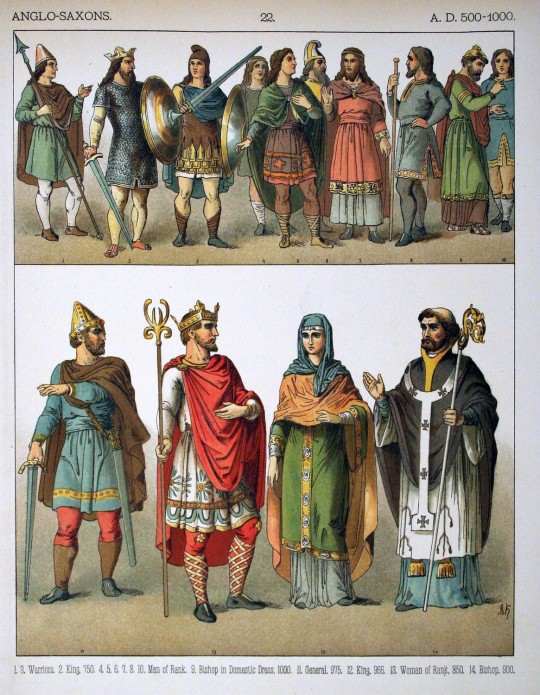
The Saxons
The Saxons were a Germanic people of the region north of the Elbe River stretching from Holstein (in modern-day Germany) to the North Sea. The Saxons who migrated to Britain in the 5th and 6th centuries CE along with the Angles, Frisians, and Jutes came to be known as Anglo-Saxons to differentiate them from those on the continent.
Continue reading...
80 notes
·
View notes
Text
Ekke Nekkepenn - the merman
In short, Ekke Nekkepenn is a merman who lives with his wife Rahn at the bottom of the North Sea and plays pranks on sailors and inhabitants of the North Frisian islands.

The best-known realisation of the Ekke-Nekkepenn myth today can be traced back to Christian Peter Hansen, who condensed and reshaped various sagas from the North Frisian region into his own continuous narrative in his Sagen und Erzählungen der Haidebewohner auf Sylt (Sagas and Tales of the Haide Inhabitants on Sylt), published in 1858. The first section of this tale is entitled ‘Der Meermann Ekke Nekkepenn’.
The story begins with Ekke Nekkepenn asking the wife of the captain of a Sylt ship sailing to England in a storm for help with the birth of her child. The beautiful and helpful captain's wife is led by the mariner to his wife Rahn, who lives at the bottom of the North Sea, and returns to the surface after a successful birth, richly endowed with gold and silver. The skipper and his wife are able to continue their journey in fine weather and later return safely and soundly to their home in Rantum on Sylt.
Many years later, Ekke Nekkepenn remembers this incident and decides - in view of the fact that Rahn has become ‘old and wrinkled’ in the meantime - to take the captain's wife as his wife instead. One day, when he spots the Rantum captain's ship, he persuades Rahn, who is sitting on the bottom of the sea, to grind salt, and the Sylt skipper and his crew perish in the resulting strong whirlpool.
On his way to the captain's wife, Ekke Nekkepenn, who has transformed himself into a handsome sailor, meets her virgin daughter Inge on the beach near Rantum. Against her will, he puts a golden ring on each of her fingers, hangs a golden chain around her neck and declares her his bride. When the girl tearfully begs him to release her, he replies that he can only do so if she can tell him her name the next evening. But nobody on the island knows the unknown stranger. As Inge walks along the beach again in despair the next evening, she hears a voice singing from the mountain at the southern tip of the island near Hörnum:
Today I shall brew; Tomorrow I shall bake; The day after tomorrow I want to get married. My name is Ekke Nekkepenn, My bride is Inge von Rantum, And nobody knows that but me alone.
She then runs to the agreed meeting place and calls out to the stranger arriving there: ‘Your name is Ekke Nekkepenn and I'll stay Inge von Rantum.’ Ever since that time, the man of the sea, who has been coerced in this way, has harboured a great rage against the islanders of Sylt and is always up to mischief when he feels like it. He destroys their ships in storms, causes them to sink in Rahn's maelstrom and damages the Sylt coastline with the tides he unleashes.
This myth is particularly prevalent on Sylt itself, because as soon as it storms, Ekke is said to be angry and he is once again angry with everyone.
It is not entirely clear what the myth itself is based on, but it is clear that Hansen has worked with two things: Nordic mythology and its sea god Ögis or Ekke as he is called in Frisian. In his ‘Materials for a Frisian Mythology’, published in 1850, Hansen writes: ‘The god of the sea was called Ögis by the Germans, Eiger by the Danes, Eie or Eia by the Frisians, also Ekke or Nekke. […] His wife was the goddess Ran, who blessed the beach, pulled the shipwrecked into her nets and after whom the old beach and dune village of Rantum was perhaps named. Incidentally, in Norse, Rane means to rob. According to a Frisian legend, Ekke once went to a woman from Rantum named Inge, but was given a basket.’ The problem here is that it is a pure invention by Hansen himself, this kind of Nordic mythology does not exist.
The second is Rumpelstiltskin. The Rumpelstiltskin variant used by Hansen belongs to a widespread complex of fairy tales and legends. In most of these tales, a dwarf or other creature helps a girl spin a certain amount of flax. The original North Frisian form of the story - which Hansen follows in his composition - does not contain precisely this element. This means that it belongs to a relatively small group of forms, which includes sagas from Pomerania, Lower Saxony, Tyrol, Lower Austria and Schleswig-Holstein. However, here he uses the verse often found in Rumpelstiltskin, except what is a merman doing on a mountain?
Apart from what Hansen has probably used here to give Ekke a story, it is more likely that this myth has been around on the islands for a long time and only in different versions and without a real name. It can therefore be assumed that Hansen was just trying to give it a unified story and a name.
57 notes
·
View notes